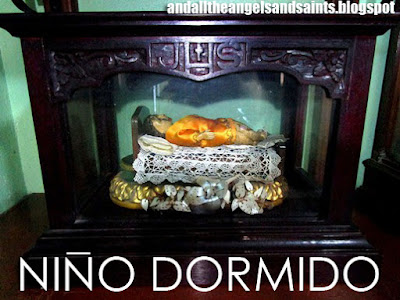 |
| SAN ROQUE, Invoked Against Pandemic |
In these, the pandemic years, no other saint has been heard more often than SAN ROQUE as his name is included in the Oratio Imperata, specifically composed for covid-19.
SAN ROQUE (“St. Roch” in France and “San Rocco” in Italy) was born in Montpellier, in southern France, near the end of the 13th century. It is said that Roch bore a vivid red birthmark on his chest, shaped like a cross. His father, a governor of Montpellier, as well as his mother, died by the time Roch was 20, leaving him to fend for himself in Europe during the time of the Black Death, the plague which killed an estimated over half of the European population.
SAN ROQUE distributed his inheritance among the poor, gave the governorship of Montpellier to his uncle which he would have inherited. With his few personal possessions, he headedfor Italy. In his journey, he encountered cities stricken by the plague. In Aquapendente, a village in Italy, he ministered to the plague-stricken citizens, healing them with the sign of the cross. He moved on to Cesena, Rome, Mantua, Modena and Parma, curing people along the way.
 |
| DELICATELY PAINTED FACE OF SAN ROQUE |
SAN ROQUE soon
caught the plague himself; and like a “self-quarantined” patient in today's
COVID-19 crisis, he sought a sanctuary, where he could be in prayerful
solitude. A dog miraculously appeared to bring him food and sustenance every
day. Surviving the plague, he chose to return to his France, but was imprisoned
instead, as he was dressed like a pilgrim. He died after 5 years, but his
identity was revealed when the cross on his chest was uncovered; he was given a
holy burial.
In 1414, when the city of Constaza, Italy was hit by a plague,
people were called on to pray to SAN
ROQUE for healing. After their
petitions and processions, the plague miraculously stopped.
This representation of the santo, in wood and ivory, depicts him as a pilgrim with his dog by his side. The head and hands are of fine ivory, classically carved, and outfitted with glass eyes. His boots are painted on.
 |
| SAN ROQUE, with original metal accessories |
The saint is iconically posed with his right hand lifting
his tunic, and his finger pointing at the festering wound on his knee. The
other hand holds his original pilgrim stick in brass, with a metal flask tied
on top.
The tunic and cape have been replaced using the original tattered garments as pattern for the new outfit, all re-created by Dr. Raffy Lopez.
SAN ROQUE’s faithful canine companion is shown on his right, with bread in his mouth. The seated dog is made of painted wood. At first glance, the Angel –his other iconographic element—seems to be missing.
Usually, the Angel is present bearing a scroll that
proclaims the saint as the patron of pestilence victims, to be invoked for
protection and relief from their illness.
However, a close inspection of the base shows no traces of nails or dowels that
could have anchored the small figure on the base to complete the tableau.
 |
| THE HEALING POWER OF SAN ROQUE |
However, there are many representations SAN ROQUE that show him Angel-less, with just a dog for his companion. Besides, the reference to the Saint’s healing power is already written on the rectangular, stone-topped base. In Spanish, it reads: “Los que tocadas de la peste invocoven mi siervo Roque se libraren por su intercesion de esta cruel de enfermedad.” (Those who are touched by the plague, invoke my servant Roque, and, through his intercession, you will be freed by his this cruel disease)
This SAN ROQUE was
possibly made in the 1930s, as it came with a gothic-style wooden urna popular in the era. I have a
special interest in the saint as I lived at the San Roque Rectory of the San Roque
Church in Blumentritt, Sta. Cruz, Manila, the church that my late uncle, Msgr.
Manuel V. del Rosario founded in 1958, and which he served until his retirement
in the 1980s.





































